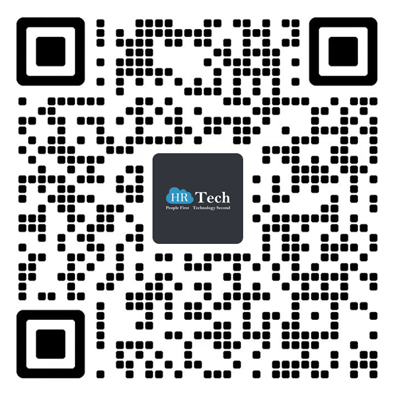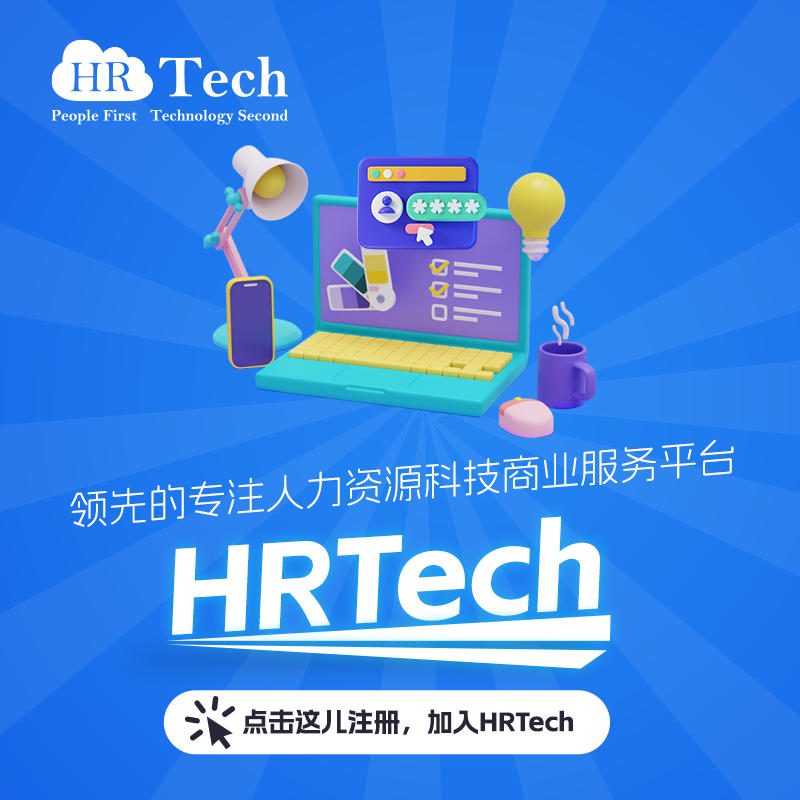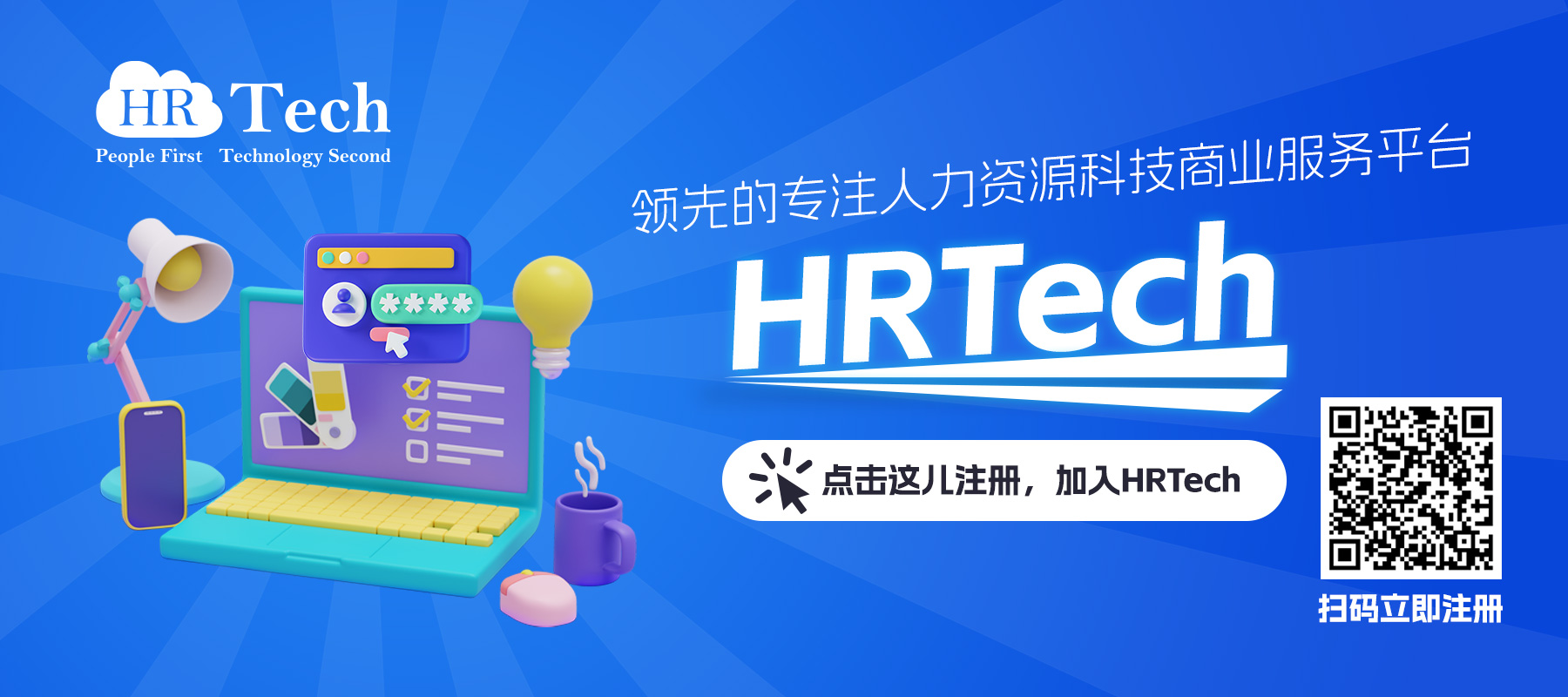-
 硅谷
硅谷
在旧金山租不起办公室怎么办?停车位办公来试试?Wepark试水停车位办公,行为艺术还是商业模式
photo by connie huang
美国中文网据Business Insider报道,为了应对高租金和拥挤的办公室,在旧金山,一种新的办公场所正在出现。有些人开始支付每小时2.25美元,租用一个马路停车位来工作。
“由于旧金山变得如此拥挤和昂贵,人们每小时支付2.25美元在停车场工作。这被称作#WePark。”NBC新闻记者布达曼发推特说。
据BBC记者威廉姆斯报道称,WePark支付了停车位的费用,但作为办公室使用价格会翻倍,并提供免费使用附近的WiFi或移动电话热点。
维克托·庞蒂斯在受到推特启发后于4月25日在旧金山市政厅附近设立了WePark。他说:“有人发布了一张把卡车用作自行车停车场的照片,并提到‘如果你能在停车位工作呢?’我想这是一个非常有趣的想法。”
威廉姆斯的报道称,第一天有大约30人尝试。“我们住在一个房价非常昂贵的地段。”WePark的“租户”沃尔什说,“想到我们使用街道的方式没有反映出这一点就太疯狂了,这些停车位与就近所有的其他办公室相比便宜太多。”
根据Zillow的数据,在旧金山,上市房屋的中位数价格接近130万美元,中位数租金为3300美元。这大大超过了分别为28.5万美元和1675美元的全美中位数。
由于房屋价格昂贵,只有12%的旧金山家庭可以负担得起房屋,近60%的技术员工负担不起。昂贵的房地产市场甚至导致一些居民推迟生孩子,决定住在他们的汽车里,或完全离开这个城市。
科技巨头扎堆在这个城市,使得人口增加,并且部分推动了房地产价格飙升。旧金山还面临众多的游民人口,达到7500名无家可归者也带来一个持续的问题。
推特上的一些人想知道WePark是否是原创,但不管怎样,这一创意突显出旧金山已经变得无法承受和拥挤的程度。
“WePark很严肃!但这也是一个玩笑。”庞蒂斯说,“在繁忙的街道上设置桌椅是荒诞的。”
补充一些来自推特的图片,图片版权来自推特作者:
以上来自综合编译,仅供参考。
-
 硅谷
硅谷
Pluralsight将以1.7亿美元收购GitPrime
Pluralsight, 一个专注于网络开发,IT认证和安全培训等主题的在线培训平台,今天宣布它将收购GitPrime,一个开发团队生产力工具,现金1.7亿美元。
GitPrime就像是代码项目的分析仪表板。它在GitHub或Bitbucket等服务上监视您团队的代码存储库,跟踪逐个用户代码提交的事件,故障单活动以及不同团队成员如何解决拉取请求等问题。我们的想法是,通过以可视/一目了然的方式提供这些数据,它有助于识别瓶颈并突出显示您的团队最有效的位置。
该公司是Y Combinator 2016年冬季课程的一部分,而Crunchbase表示他们最近的一轮是1050万美元的A系列。
Pluralsight于去年5月上市。该公司表示,这是首次公开募股后的首次收购,他们预计该交易将于下周末完成。
以上由AI翻译完成。仅供参考
作者:Greg Kumparak 来自 https://techcrunch.com/2019/05/01/pluralsight-will-acquire-gitprime-for-170m/
-
 硅谷
硅谷
YC毕业生HRSaaS公司Lattice完成1500万美元B轮融资, Shasta Ventures领投
Lattice 是目标管理与过程管理的HRSaaS平台,OKR在线管理工具。这么理解比较容易。
Lattice ( the people management platform,)今天公布了1500万美元的B轮融资。该轮融资由Shasta Ventures领导,现有投资者参与其中,包括Thrive Capital,Khosla Ventures和Y Combinator。
企业软件的消费化是众所周知的趋势; 员工希望他们在工作中使用的软件感觉良好并且运作良好。Lattice一直处于人力资源管理这一趋势的最前沿,用更现代化的平台和方法取代了一年一度的不灵活的绩效评估和调查软件。
Lattice使人力资源领导者能够发展敬业,高绩效的团队,并发现有关其员工队伍的可操作见解。当人们更加投入时,他们的表现更高,当人们成功时,他们就会更多地投入到工作中。Lattice推动了良性循环,将员工变为高绩效者,管理者成为领导者,公司成为最佳工作场所。
Reddit人力与文化副总裁Katelin Holloway表示,Lattice正在引领这一变革,“Lattice支持我们每个人专注于做最好的工作,而不是担心订阅过时的绩效管理概念的笨重系统。对Lattice所做的软件的需求已经显而易见; 各地的公司都在寻找灵活,智能和直观的设计,以便在组织内实现正确的对话并提高绩效。“
Lattice为管理人员及其团队提供了持续发展,实现和保持参与所需的工具,如透明目标和OKR跟踪,1对1,评论和实时反馈。“Holloway表示,”不仅软件支持我们的绩效管理框架,“它已被证明是管理人员和团队如何协同工作的关键组成部分,我很感激能够让我们的员工团队更具战略性的工具。”
Holloway和Reddit并不孤单。Lattice与包括Slack,Glossier,Coinbase和Cruise在内的1,200多家公司的人员团队合作,帮助这些公司将绩效管理和员工敬业度转变为竞争优势。
提高员工对HR软件的采用率
通过最新一轮融资,Lattice计划投资产品开发,继续构建更多解决方案,帮助人们领导者培养强劲的业绩,深刻理解员工敬业度,并揭示两者之间的联系。
Lattice的首席执行官兼联合创始人杰克奥特曼认为,人力资源软件的新世界正在兴起,“人力资源软件最强大的创新之一就是行政工作的统一和简化; 将薪资,福利和核心人力资源联系在一起对人力资源团队来说是一个重要的节省时间。我们在面向员工的一方看到了同样的机会; 一个统一的系统,其中性能,参与度,入职,学习等以无缝且强大的体验相互连接。这些产品的关键成果不仅仅是节省时间,而是更多参与和富有成效的员工。“
Altman和Lattice认为,人力资源技术的未来状态将是两个核心解决方案:后台HRIS记录系统和员工频繁互动的人员管理系统。来自G2 Crowd的用户Lattice评论显示,Lattice正在实现其目标,即建立员工喜爱使用的引人入胜的人力资源软件。
建立一个成功的文化始于Lattice
Lattice已经成为那些优先建立高绩效团队的公司的行业标准。领导莎斯塔风险投资并加入Lattice董事会的道格·佩珀强调了市场的变化:“我们的投资理念的核心是公司文化越来越成为竞争优势,这就是莱迪思这样的软件必不可少的原因。当我们看到他们自己生活时,我们感到非常激动,我们相信他们已经准备好领导这一运动。“
Lattice本身致力于塑造强劲增长与健康组织之间的平衡。在过去的一年里,该公司的现金流为正,人数增加了一倍,并增加了700多个新客户。除了业务成果之外,杰克认为公司的使命是人性化的,“我们在工作上花了很多时间,而且我们在那里给予了大量的精神和情感能量。Lattice可以让工作变得更加充实,对人类幸福的影响也越大。“
来源Lattice
-
 硅谷
硅谷
职场专家Zippia获得850万美元的A轮融资
Zippia是一家位于加利福尼亚州圣马特奥的在线工具供应商,帮助人们规划自己的职业生涯,筹集了850万美元的A轮融资。
自2015年初成立以来,该轮融资总额已达到1200万美元,由e.ventures领导,现有股东包括MHS Capital,NextView Ventures和Correlation Ventures。与资金相结合,e.ventures的Thomas Gieselmann将加入Zippia的董事会。
该公司打算将这笔资金用于增加技术开发,新的营销工作以及详细的公司数据和评论。
Zippia于2015年初由技术行业资深人士Henry Shao和Chris Kolmar共同创立,通过使用机器学习和数据汇总创建职业地图,为职业生涯提供透明度,使求职者能够获得职业答案并做出更明智的职业生涯决定。
Zippia每月有超过100万的访客。
来自:FinSMEs http://www.finsmes.com/2019/04/zippia-raises-8-5m-in-series-a-funding.html
由AI翻译完成,仅供参考
-
 硅谷
硅谷
企业活动管理平台Bizzabo获得2700万美元的D轮融资
Bizzabo是纽约和特拉维夫的活动管理平台,已经筹集了2700万美元的D 轮融资。领投的是Viola Growth,以及新投资者Next47。
我们还被告知,之前的支持者,包括Pilot Growth,都跟进了。
新的资金使公司筹集的资金总额达到5600万美元。
最初于2012年作为活动参与者Bizzabo的网络应用程序推出 现在声称是领先的端到端“事件成功平台”。
如今,描述基于云的软件的一种方式类似于“Salesforce for events”:帮助企业创建,管理和执行每个方面现场活动。
正如TechCrunch的Catherine Shu 先前所写,SaaS自动执行与电子邮件,社交媒体和网络营销以及联系人管理相关的耗时事件任务。
此外,还有越来越多的数据,能够处理和分析事件数据,以帮助活动组织者获得更多注册,增加收入并改善整体与会者体验。
“我们的愿景是为与会者提供数据驱动和个性化的旅程,”Bizzabo首席执行官兼联合创始人Eran Ben-Shushan告诉我。“一个800人的会议应该感觉像800个独特的现场活动体验。通过在整个与会者旅程中利用数百个数据点,我们的客户可以提供极其个性化的促销活动,定制活动日程并主动迎合每位与会者的行动。“
例如,Ben-Shushan表示,用户会议的与会者可以根据事件之前,期间和之后表达的兴趣和意图,接收推荐会话,业务介绍甚至赞助优惠。
为此,Bizzabo表示其D系列将用于扩展平台的功能,并继续帮助企业和中端市场组织“构建数据驱动,个性化和引人入胜的专业活动体验。”这将包括增加其研发和自己的营销团队,为纽约和特拉维夫办事处的120多名现有员工增添了新的活力。
Ben-Shushan估计,平均有25%的B2B公司的营销预算用于直播活动。这导致每年专业活动的数量呈指数级增长,例如会议和研讨会,贸易展览或其他经历。
然而,在最大化投资回报率的同时创建,管理,营销和衡量事件成功仍然是一个挑战 - 这也是Ben-Shushan说Bizzabo的用武之地。
Bizzabo的知名客户包括Inbound,SaaStr,Forbes,Dow Jones,Gainsight和Drift。同时,据说整个活动管理空间价值5000亿美元。
原文来自: TechCrunch 作者:Steve O'Hear
https://techcrunch.com/2019/04/17/bizzabo-series-d/
-
 硅谷
硅谷
HRTechChina独家推荐--YC W19孵化DemoDay第一天中的企业服务项目
Y Combinator的孵化器的项目已经变得非常庞大,这也是首次在旧金山举办,同时几个厅同步进行。
下面是第一天DemoDay 的一些企业服务项目的介绍。
Pioneer Stage
Career Karma:未来几年,数以亿计的人需要换工作。职业因果报应会给他们一个分班测验,并让他们在编程训练营和其他培训项目中被录取,这些培训项目每名学生向创业公司支付1000美元。随着收入分享协议越来越受欢迎,许多职业技能提供者将愿意出钱招收最有潜力的学生。
Team Mobot:模拟用户界面测试并不能捕捉到所有的bug,对于不太懂技术的公司来说,测试可能很复杂。Team Mobot提供了一组机器人,可以在实际设备上对任何应用程序的UI进行物理测试,以执行QA测试并发现bug。随着时间的推移,Mobot团队的舰队学会了提高精确度,这家初创公司计划下一步进军物联网和医疗设备垂直领域。
Bento Club:为上班族提供更便宜的午餐外卖。顾客从一组精选的餐厅预订食物,Bento会拿起这些食物,并把所有的订单带到顾客办公室一个街区内的一个共享的取货点。38%的客户来自于推荐。
Basilica:大多数试图构建人工智能系统的团队没有足够的数据,而这些数据的收集成本可能很高。巴西利卡表示,其转移学习方法允许企业仅用1000个数据点而不是100万个数据点来创建精确的人工智能。Basilica通过使用来自其客户端的数据来产生网络效应,从而提高团队需要跟上谷歌的每个垂直方向的效率。
Keynua:在拉丁美洲,签署文件需要繁琐的身份验证。使用Keynua,您可以录制一个简短的视频,口头上同意一个文档,他们使用现有的记录来验证您的身份。该团队之前的产品(Cinepapaya)于2016年被Fandango收购。
Basement:你亲密朋友的社交网络。Feed广播社交网络让人感觉缺乏人情味,而且不可避免地会让你在与远方的熟人分享时感到膨胀。Basement是专为大学生和毕业生设计的,他们只需要添加他们最好的朋友。它提供了instagram风格的发布工具,但这种亲近感带来了更像是WhatsApp聊天的评论线程。Basement将不得不让用户打破礼貌的社交契约,这样他们就不会和错误的人交朋友,而是有机会成为Facebook想去的地方。
Slapdash:企业应用程序运行缓慢,很难在它们之间找到文件或消息。Slapdash创建了一个桌面软件速度容器,员工可以在其中运行所有的办公软件,比如Slack、Dropbox、Asana、Salesforce和谷歌。用户可以在他们所有的应用程序中进行搜索,从而提高效率,吸引雇主订阅SaaS。
AccioJob:印度只有三分之一的大学毕业生找到了工作,因为他们的学校通常只让他们接触当地的招聘人员。AccioJob向大学收取每年1万美元的就业费用,并向雇主收取每次就业费用。由于AccioJob可以获取学生的联系方式和成绩,随着越来越多的印度学生开始入学,它可以成为印度最好大学毕业生的门户。
Supernova:基于设计模型编写应用程序在内部可能很困难,但如果外包出去,则成本高昂且难以维护。Supernova将设计转换为可生产的代码,这些代码遵循最佳实践,因此很容易更新。Supernova的人工智能可以理解产品的用途,并区分导航元素、按钮等。随着越来越多的企业试图用科技产品实现现代化,“Supernova”可能会让它们专注于自身的效用,而不是计算机科学。
Deel: 2000万国际承包商与美国公司合作,但很难在职培训他们。Deel在一个界面中处理合同、付款和税收,以消除文书工作和浪费时间。Deel向企业收取每位承包商每月10美元的费用和1%的支出费用,平均每位承包商每年可获得560美元的收入。随着全球化趋势的继续,企业需要更好的远程人力资源工具。
Sunsama: 与Trello、JIRA和Asana等SaaS工具集成的任务管理器,可以帮助员工识别和管理他们在特定的一天应该完成的任务。
Mission Stage
Cherry: Cherry是现代初创公司的办公室福利解决方案。联合创始人希望让人们选择他们最喜欢的互联网服务,而不是给所有员工相同的福利。人们将能够通过Slackbot界面选择服务,并由他们的公司支付ClassPass和HBO等服务。该公司表示,他们有24家公司在进行付费试点项目。我们之前在TechCrunch报道过Cherry。
FlockJay: 运营着一家在线销售学院,教授那些来自弱势群体的求职者从事技术销售所需的技能和培训。为期12周的训练营为学员提供培训和指导。该公司推出了第一批17名学生的课程,其中100%的学生已经在面试中,40%的学生已经在科技行业找到了新的职业。
Demodesk: Demodesk正在开发一个屏幕共享工具,通过直接为客户演示产品来帮助企业重塑销售。它的独特之处在于,它不是您的桌面,而是一个虚拟机,您的演示文稿可以在虚拟机中运行,而潜在客户不必等待漫长的下载过程,同时仍然能够协作和编辑软件中正在发生的事情。
PreFlight: PreFlight正在尝试完全自动化UI测试,并消除公司专门为QA招聘人员的需求。该公司的Chrome扩展可以帮助开发人员记录用户行为并运行健壮的测试。在两周前发布后,用户总共运行了5.5万次PreFlight。
Edyst: Edyst是一个面向印度希望找到工作的大学生的在线编程训练营。该公司保证,每名学生在完成本课程后,将至少得到5次面试机会。现在,他们的课程由大学直接为学生支付。最终,联合创始人相信,训练营将能够取代印度较低层次的大学。
Docucharm:这个平台由前Uber产品经理Minh Tri Pham联合创办,将文档转化为计算机能够理解的结构化数据,从而精确地自动化文档处理流程,不再需要人工数据输入。Docucharm的API可以理解各种形式的文档(比如工资单),并且可以毫无错误地提取必要的信息。它的客户包括报税公司Tributi和贷款企业Aspire。
Skill-lync: Skill-lync是另一家YC创业公司,该公司希望解决印度大学生在所学领域找不到工作的问题。这家初创公司针对机械工程专业的学生推出了一系列在线课程,可以弥补过时的大学课程。该团队已经培养了2800名学生,月收入8.2万美元。
Rebank:业务银行的自动化工具,可同时与任何银行和/或多个银行工作。Rebank自称“入侵了银行系统”,目前有40家公司使用该工具来节省时间。Rebank采用订阅模式,每月向客户收取50美元的平台使用费。
AXDRAFT: 这家初创公司正在开发一种软件,帮助较小的公司自动完成文件的填写,帮助初创公司减少起草和校对日常文件的时间。该公司推出了一项合同解决方案,帮助初创企业快速免费填写文件,同时收取25美元的费用来审查合同,确保一切符合要求。
Glide: 目前有一个相当大的趋势,就是提供更容易构建网页或移动应用程序的服务。Glide让客户轻松地从谷歌Sheets页面创建设计良好的移动应用程序。这不仅使构建页面变得容易,而且简化了保持站点信息更新所需的技能。
Boundary Layer Technologies:使用水翼的高速集装箱船。技术支持的船舶允许的过境时间与航空旅行相当,但要便宜得多。该公司仅用10周时间就完成了原型机的制造,成本为15万美元。该公司还获得了Flexport的一份意向书,将建造往返于洛杉矶和上海之间的船只。
以上为AI翻译,内容仅供参考
原文链接:Here are the 85+ startups that launched at YC’s W19 Demo Day 1 Josh Constine, Kate Clark, Lucas Matney, Greg Kumparak1 day ago Comment
-
 硅谷
硅谷
健康福利平台 HealthJoy获得1250万美元的B轮融资,帮助员工充分享受医疗保健福利
美国的医疗保健非常复杂,即使是有良好福利的员工也可能难以驾驭他们的选择。HealthJoy希望帮助使用AI来回答问题的健康福利平台。这家总部位于芝加哥的创业公司今天宣布,它已经筹集了由美国风险投资公司(US Venture Partners)领导的B轮融资1250万美元,Epic Ventures和回归投资者Chicago Ventures,Sidekick Ventures及其联合创始人参与其中。
这带来了HealthJoy的总资金,包括2017年8月宣布的300万美元A系列,达到900万美元。
该公司将在未来10个月内使用其B系列将其团队翻倍至250人。它目前拥有约20万用户,去年增长了610%,预计今年将增长250%。USVP普通合伙人Jonathan Root将加入HealthJoy的董事会。
HealthJoy的应用程序由Justin Holland和Doug Morse-Schindler于2014年推出,帮助用户管理索赔,免赔额,健康储蓄账户和处方,此外还指导他们通过单点解决方案或单个供应商提供的特定服务作为他们的一部分。福利待遇。例如,它可能会将成员指向远程医疗提供者。HealthJoy首席执行官霍兰德在一封电子邮件中告诉TechCrunch,去年,创业公司的整本业务中远程医疗利用率为27.3%。他补充说,远程医疗通常可以避免办公室访问,紧急护理或前往急诊室,每次访问可节省约450至500美元。
作为HealthJoy如何帮助用户的另一个例子,Holland表示,一名员工每月花在维护药物上的费用超过10,000美元,但通过包括替代药物,国际药房计划和制造商协助在内的策略,这一数量减少了90%以上。这为员工节省了超过1,000美元的自付费用,雇主节省了8,000美元。
荷兰在滑雪时膝盖受伤并且不得不安排MRI扫描后对健康益处空间感兴趣。由于他尚未达到其个人平价医疗法案计划的免赔额,荷兰需要自掏腰包支付扫描费用。研究MRI定价“让我陷入了一个非常复杂和不透明的医疗保健定价世界的兔子洞,”他说。“在几天的工作结束时,我发现两个几乎相同的核磁共振成像的成本可能从500美元到5000美元不等。价格差异本身似乎是一个值得解决的大问题。“
Holland和Morse-Schindler已经在他们的简历上成功启动了出口(包括2012年被AVG Technologies收购的OpenInstall和2010年被Rakuten收购的FreeCause)。两人决定应对改善消费者体验医疗保健系统的挑战。起初他们专注于具有个人健康计划的直接面向消费者的模式,但后来转向与2017年初的雇主合作。
“我们发现,我们对会员的关注同样适用于员工,而且随着免赔额的增加,员工急于成为医疗保健购物者。“超过40%的医疗保健被认为是'可购买的',”Holland说。
其他科技公司专注于从不同角度改善健康益处空间,包括League,Lumity,Lyra Health和Spring Health。Holland认为这些公司是HealthJoy的潜在合作伙伴。
“通常情况下,我们不是通过将所有服务集中到一个平台来提高利用率来反对竞争对手,而是针对单点解决方案缺乏利用而进行销售”。“从运营的角度来看,福利管理平台对我们至关重要,而且完全互补。”
以上由AI翻译完成,仅供参考,原文可以访问下面信息
文章来源:https://techcrunch.com/2019/03/08/healthjoy-raises-12-5m-series-b-to-help-employees-make-the-most-of-their-healthcare-benefits/
-
 硅谷
硅谷
Okta以5250万美元收购工作流自动化创业公司Azuqua
在昨天下午的财报报告中,Okta宣布计划以5250万美元的价格收购位于华盛顿州西雅图的工作流自动化初创公司Azuqua。
在宣布这一消息的博客文章中,Okta联合创始人兼首席运营官Frederic Kerrest看到两家公司的合并是一种在复杂工作流程中平滑移动应用程序的方式,而无需经常提供凭据。
“有了Okta和Azuqua,IT团队将能够使用预构建的连接器和逻辑来创建简化的身份过程并提高运营速度。此外,产品团队将能够将这项技术与Okta的核心认证和用户管理技术一起嵌入自己的应用程序中,以构建...集成的客户体验,“Kerrest写道。
在现代企业中,人员和工作在应用程序和服务之间不断变换和移动,将自动化软件与身份和访问管理相结合,可以提供在它们之间移动的无缝方式。
Azuqua自2013年推出以来筹集了1600万美元,似乎给投资者带来了不错的回报。交易完成后,Okta打算将Azuqua团队搬到Bellevue办事处,增加其在西北地区的业务。Okta的总部位于旧金山。Azuqua的客户包括Airbnb,麦当劳,VMware和HubSpot,
Okta成立于2009年,在2017年4月上市之前筹得超过2.29亿美元。是由Salesforce前副总裁创立
以上由AI翻译完成,仅供参考
原文来自:Techcrunch
Okta to acquire workflow automation startup Azuqua for $52.5M
-
 硅谷
硅谷
Microsoft将Yammer集成到了Microsoft Teams中
微软今天公布了Yammer的计划,Yammer是该公司企业社交网络,用于组织内部的私人通信。它正在接受Microsoft Teams的处理 - 用户现在可以在他们的频道中添加Yammer选项卡。
Microsoft Teams被超过329,000个组织使用,是该公司有史以来发展最快的商业应用程序。Microsoft Teams只有两年的历史 - 它于2017年3月在全球推出。与此同时,微软在2012年6月以12亿美元的价格收购了Yammer。
Microsoft Teams是Microsoft的基于Office 365聊天的协作工具,可与Google的环聊,Facebook的Workplace和Slack竞争。微软一直在将其各种企业工具慢慢整合到Microsoft Teams中,例如Skype for Business和Skype Room Systems。但Yammer仍然独立,这意味着Microsoft Teams无法完全取代其用例。因此,微软决定将商业社交网络集成到通信工具中。
将Yammer添加到您的Teams频道
通过向Microsoft Teams频道添加Yammer选项卡,用户可以在Yammer中查看组,关注主题提要或共享对话,而无需离开Teams。在向更广泛的Yammer小组发布回复之前,他们还可以在Teams中讨论Yammer对话。
要尝试新的集成,请执行以下七个步骤:
在“Teams”频道中,选择标签栏上的+。
选择Yammer选项卡。
选择要在选项卡上显示的Yammer组,然后单击“安装”。
安装应用程序后,必须对其进行配置。在“内容类型”部分中,选择以下选项之一:
Yammer Group:所选组中用户可见的所有消息。
主题Feed:用户可以使用所选主题标签标签显示的所有消息,例如#NewEmployee。
在“搜索”框中,键入要包括的组名称或主题。
要自动发送一个Teams消息,让您的Teams知道您已添加了Yammer选项卡,请确保选中了“关于此选项卡发布到频道”复选框。否则,清除它。
单击保存。新的Yammer选项卡显示在所有Teams成员的选项卡栏中。
集成不仅仅是公司Yammer页面的简单视图。当团队成员进入Yammer选项卡时,他们会被Yammer验证,以便他们只能看到他们有权访问的内容。也就是说,Yammer标签只适用于桌面和网络 - 微软可能会在未来增加对移动设备的支持。
以上为AI翻译,内容仅供参考
原文链接:Microsoft integrates Yammer into Teams
-
 硅谷
硅谷
员工入职和管理公司Sapling 宣布获得400万美元融资,强调员工体验
Sapling是一家位于旧金山的三年公司,其员工管理和入职管理软件正被少数但数量不断增加的中型公司采用,这些公司拥有广泛的员工队伍,今天宣布已筹集400万美元资金。投资者有来自谷歌人工智能基金Gradient Ventures和Tuesday Capital(以前称为CrunchFund)的资金。(in funding from Gradient Ventures, which is Google’s AI fund, and Tuesday Capital, formerly known as CrunchFund.)
几个月前,该公司悄悄获得了这笔资金,并一直在利用这笔资金,将目前的雇员增加到50人。
该公司的创始团队是投资者喜欢看到的那种,这意味着他们以前的工作经历在很多方面促使他们开始了Sapling。
联合创始人兼首席执行官巴特麦克唐纳在人力资源部门度过了他的整个职业生涯,他最近在澳大利亚墨尔本工作,担任全球编码学院大会的区域主管,在那里他聘请并管理了一个10人的营销,销售和运营团队。
与此同时,联合创始人安迪·克里巴尔(出生于与麦克唐纳一样的悉尼医院,在一天后)也了解个人试图无缝接纳新员工的困境,最近在一家名为Credible Labs的金融科技创业公司的业务发展计划中工作,像许多公司一样,增加员工人数是一个令人沮丧的地方。
周二资本联合创始人帕特加拉格尔说:“我喜欢巴特和安迪在以前的职位上处理过蹩脚的人力资源软件,从而真正了解客户如何看待问题。” “如果我们投资预产品,这两者都不是技术问题,但到了我们投资时,他们已经证明他们可以构建客户喜爱的软件。”
事实上,加拉格尔说,他的团队特别被Sapling吸引,因为该公司的一些投资组合公司一直在使用其入门软件并且“真的很喜欢它。很难找到人们真正喜欢的人力资源软件,因此这对我们来说是一个巨大的积极因素,并有助于消除他们运营的空间噪音。”
那么Sapling有什么特别之处呢?大多数情况下,它的方法似乎将人力资源高管已经使用的工具和软件集中在一起,包括用于工资单的ADP,或用于提高工作效率的G Suite,以及用于招聘的Lever,以及使用大量AI来预测行为的集成。员工,使管理人员更容易招聘,帮助,管理和支持当前和未来的员工。
正如Macdonald在最简单的层面上解释的那样,Sapling不仅为他们提供软件,而且还连接他们的工具“因此他们不必打开10个标签。他们所要做的就是在Sapling内部运行他们的工作流程,以便例如员工可以在Slack中请求休假,“并且该请求将自动反映在雇主的工资和福利系统中(一旦获得批准)。
Sapling目前与拥有100到1,500名员工的公司合作,包括InVision,这是一个八年历史的商业平台,由设计团队用于创建移动和桌面数字产品,目前正在投资F系列。拥有庞大分布式员工队伍的InVision表示,Sapling通过加快沟通和使员工敬业度更加无缝,为公司节省了1,000个小时。
Sapling的下一步还有待观察。这是一个非常拥挤的类别,不缺少吸引风险投资的一体化人力资源解决方案。
与此同时,由于失业率低导致许多服装企业难以保持其人才,Sapling巧妙地将自己定位为一个重要工具,专门帮助地理位置分散的团队保留和聘用员工。像InVision,Digital Ocean,KPMG和Kayak这样的客户也说它也在运作。
上图,从左到右:创始人Bart Macdonald和Andy Crebar,由Sapling提供。
原文来源:https://techcrunch.com/2019/02/26/sapling-an-employee-management-and-on-boarding-platform-focused-on-distributed-teams-lands-4-million-in-seed-funding/
由AI翻译完成,仅供参考。
 扫一扫 加微信
hrtechchina
扫一扫 加微信
hrtechchina
 硅谷
硅谷
 硅谷
硅谷
 硅谷
硅谷
 硅谷
硅谷
 硅谷
硅谷
 硅谷
硅谷
 硅谷
硅谷
 硅谷
硅谷
 硅谷
硅谷
 硅谷
硅谷
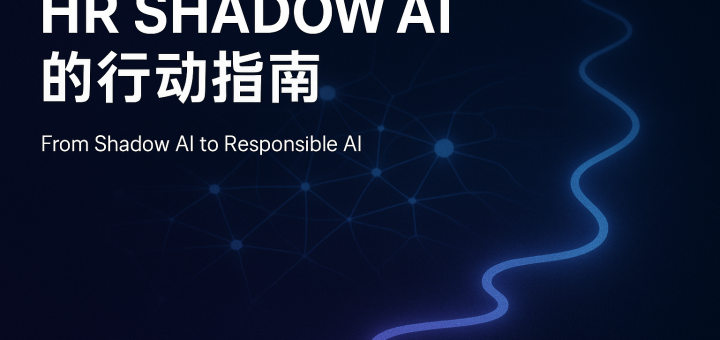



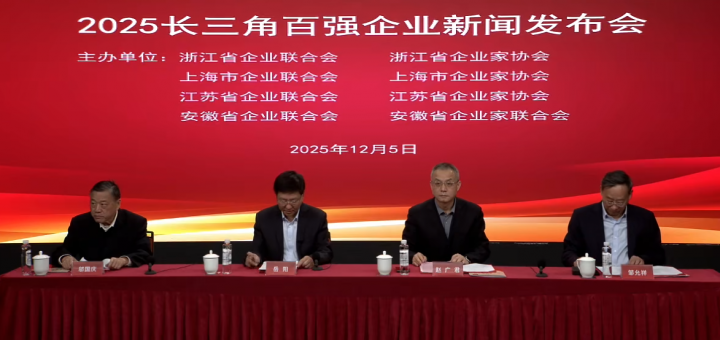
 扫一扫 加微信
hrtechchina
扫一扫 加微信
hrtechchina

